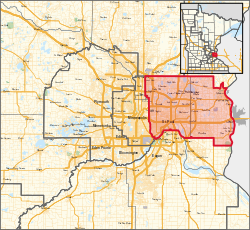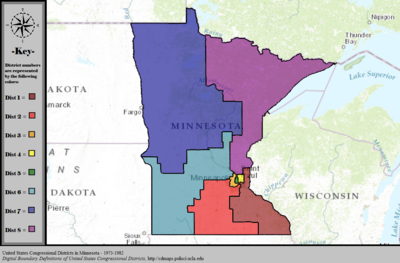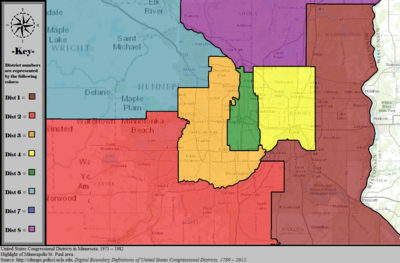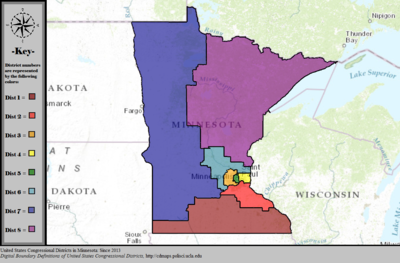
Interactive map version
Minnesota is currently divided into eight congressional districts, each represented by a member of the United States House of Representatives. After the 2020 census, the number of Minnesota's seats remained unchanged.
Contents
- Current districts and representatives
- Historical and present district boundaries
- Obsolete districts
- Districts
- Importance in state government
- See also
- References
- External links
Minnesota statutes do not require candidates for the United States House of Representatives to reside in the district in which they run for office, but candidates must be inhabitants of the state at the time of the election. [1] [2]






































